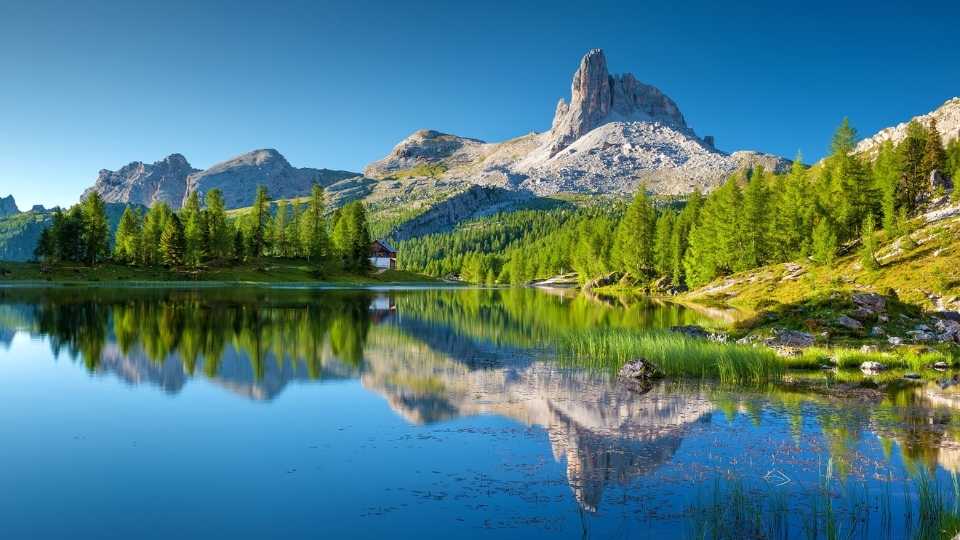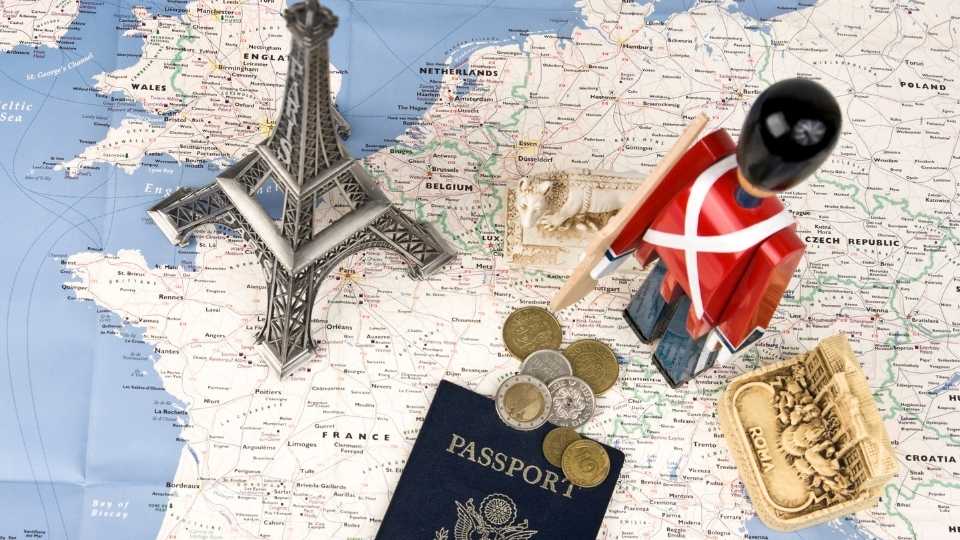Family Travel
Exploring the Last Great Places: How National Geographic’s 50 Destinations Preserve Our World’s Biodiversity and Heritage


# Exploring the Last Great Places: How National Geographic’s 50 Destinations Preserve Our World’s Biodiversity and Heritage
In an era where the call for conservation and preservation of the natural world has never been more urgent, National Geographic’s list of the 50 of the world’s Last Great Places stands as a testament to the beauty and diversity of our planet. This carefully curated collection not only highlights destinations of unparalleled natural beauty and biodiversity but also underscores the importance of protecting these areas for future generations. Through exploration, conservation, and education, these destinations offer a glimpse into the untouched wilderness and rich heritage of our world.
The Significance of Biodiversity and Heritage Conservation
Biodiversity, the variety of life on Earth, plays a critical role in the sustainability of our planet. It contributes to ecosystem services, which are essential for human survival, such as clean water, air, and fertile soil. Furthermore, biodiversity is a source of immense heritage value, connecting us with the natural world and our place within it. Preserving these last great places is not only an act of environmental stewardship but also a means to safeguard the cultural and historical narratives that define our humanity.
Destinations That Define Wilderness and Natural Beauty
Among the 50 destinations highlighted by National Geographic, each location offers a unique window into the world’s remaining wilderness areas. From the lush rainforests of the Amazon to the icy expanses of Antarctica, these places are home to some of the most spectacular landscapes and wildlife on the planet. By bringing attention to these areas, National Geographic aims to inspire a sense of wonder and responsibility towards the natural world.
Exploration as a Tool for Conservation
Exploration has always been at the heart of National Geographic’s mission. By venturing into the unknown and bringing back stories of the natural world, explorers have played a crucial role in conservation efforts. Today, exploration goes hand in hand with scientific research, providing valuable data that can inform conservation strategies. Through the stories of adventurers and scientists, we learn about the challenges facing these last great places and the efforts being made to protect them.
The Role of Destinations in Preserving Biodiversity
The 50 destinations identified by National Geographic are more than just places of natural beauty; they are critical habitats for countless species. Many of these areas are biodiversity hotspots, regions that are both rich in species and under threat from human activities. By focusing on these destinations, conservation efforts can be prioritized to protect the most vulnerable ecosystems and the species that depend on them.
Heritage and the Human Connection to Nature
The concept of heritage plays a vital role in conservation. By recognizing the cultural, historical, and spiritual significance of natural places, we deepen our connection to the environment. This connection can inspire a greater commitment to conservation efforts, as people are motivated to protect places that hold personal and collective meaning. The 50 destinations highlighted by National Geographic serve as reminders of our shared heritage and the importance of preserving it for future generations.
Conclusion
National Geographic’s list of the 50 of the world’s Last Great Places is more than just a travel guide; it is a call to action. In showcasing these destinations, National Geographic invites us to witness the beauty of the natural world and to participate in its preservation. Through exploration, conservation, and an appreciation for biodiversity and heritage, we can ensure that these last great places continue to inspire and sustain life on Earth for generations to come.



Hello there! I’m Gabriel Holmes, a 41-year-old travel enthusiast with a degree in Marketing from the Indiana University Northwest. I’m the voice behind TopWorldTravels.com, where I channel my passion for exploration into engaging travel narratives and invaluable tips.
My journey into the world of travel is a personal odyssey, fueled by a desire to uncover the beauty and diversity our planet has to offer. Over the years, I’ve wandered through countless destinations, immersing myself in various cultures and capturing the essence of each experience through my writing. From the bustling streets of metropolitan cities to the serene landscapes off the beaten path, I’ve made it my mission to share the gems I discover along the way.
Armed with my marketing background from IUN, I approach travel with a strategic and analytical mindset. This expertise allows me to curate content on TopWorldTravels.com that resonates with a diverse audience. Whether you’re a budget backpacker or a luxury traveler, my goal is to provide insights that cater to all tastes and preferences.
Beyond the typical tourist spots, I’m committed to uncovering the authentic heart of each destination. My writings not only offer practical advice on packing and navigating unfamiliar terrains but also emphasize the importance of responsible tourism. I believe in leaving a positive impact on the places I visit, promoting sustainable practices that preserve the environment and support local communities.
Join me on my virtual expeditions at TopWorldTravels.com, where my words weave a tapestry of discovery, wanderlust, and cultural appreciation. Travel, for me, is more than a leisure activity; it’s a transformative journey that enriches the soul and broadens horizons. Let TopWorldTravels.com be your compass to a world of unforgettable experiences, as we embark on this vicarious adventure together.
Family Travel
Exploring Strange Communities: A Journey Through the World’s Most Unusual Societies and Cultures


In the vast tapestry of human civilization, there are threads that run in unexpected, often astonishing directions. These are the strange communities, societies that deviate from what most consider the norm, presenting lifestyles, beliefs, and traditions that are as diverse as they are fascinating. This article embarks on a journey to uncover the essence of these unique enclaves, offering a glimpse into the world’s most unusual societies and eccentric cultures.
The Allure of Peculiar Societies
Human curiosity knows no bounds, and the allure of understanding what is different drives our interest in these peculiar societies. These communities, often hidden away or existing just on the fringes of mainstream society, offer a window into ways of life that challenge our perceptions of normalcy and provoke thought about the vast spectrum of human existence.
Defining Strange Communities
What exactly makes a community “strange” or “unusual”? It’s not merely about being different; it’s about embodying practices, beliefs, or social structures that starkly contrast with those of the larger society. These can range from eccentric religious practices to unique social hierarchies, from peculiar cultural rituals to societies that have developed in isolation, leading to the evolution of distinct languages and traditions.
Examples of Unusual Societies
One of the most renowned examples is the Amish community in the United States. Known for their simple living, plain dress, and reluctance to adopt many conveniences of modern technology, the Amish offer a striking contrast to the fast-paced, tech-driven world surrounding them. Their dedication to community and tradition provides valuable insights into the benefits of living a life focused on simplicity and faith.
Another intriguing example is the Auroville community in India. Founded with the vision of human unity, Auroville is a place where people from across the globe come together to live in peace, irrespective of creed, color, or nationality. This experimental township focuses on sustainable living and the realization of human potential, making it a unique model for future societies.
The Cultural Significance of Eccentric Enclaves
These eccentric enclaves are not mere curiosities; they hold significant cultural value. They serve as living museums, preserving traditions and ways of life that are at risk of being swallowed by globalization and homogenization. They remind us of the incredible diversity of human thought and lifestyle, offering perspectives that can inspire innovation and creativity in addressing global challenges.
Moreover, these communities often embody principles and values that have become rare in broader society, such as deep respect for the environment, a focus on community well-being over individual success, and a commitment to spiritual or philosophical ideals over material gain.
Challenges Faced by Unusual Societies
Despite their invaluable contributions to cultural diversity, many of these societies face significant challenges. External pressures such as economic development, political conflict, and climate change threaten their existence. Additionally, the younger generation, drawn by the allure of modern life, may choose to leave their traditional communities, leading to a gradual erosion of these unique cultures.
Preservation efforts are crucial to ensure that these societies do not vanish, taking with them knowledge and traditions that have been passed down through generations. This involves a delicate balance between protecting these communities and respecting their autonomy and desire to remain isolated or unchanged by outside influences.
Learning from Peculiar Cultures
There is much to learn from these strange communities. Their resilience in the face of modern challenges, their innovative approaches to sustainable living, and their commitment to principles that prioritize the collective well-being are lessons that can inform and inspire broader societal change.
In an era where the pace of life continues to accelerate, and where the pursuit of material success often overshadows deeper values, these unusual societies stand as a testament to alternative modes of living. They challenge us to question our assumptions about progress and success and to consider the diverse ways in which a fulfilling life can be achieved.
Conclusion
As we journey through the world’s most unusual societies and cultures, we are reminded of the incredible diversity that characterizes human life on this planet. These strange communities, with their peculiar customs, eccentric lifestyles, and rich traditions, offer valuable insights into the myriad ways humans have found to organize their societies, relate to the environment, and understand their place in the cosmos.
In exploring these communities, we are not merely voyeurs into an exotic “other”; we are students learning from the vast human experience, gaining perspectives that can enrich our understanding of what it means to be part of this global family. The journey through these unusual societies and cultures is a journey into the heart of humanity itself, revealing the boundless creativity and resilience that define us as a species.



Hello there! I’m Gabriel Holmes, a 41-year-old travel enthusiast with a degree in Marketing from the Indiana University Northwest. I’m the voice behind TopWorldTravels.com, where I channel my passion for exploration into engaging travel narratives and invaluable tips.
My journey into the world of travel is a personal odyssey, fueled by a desire to uncover the beauty and diversity our planet has to offer. Over the years, I’ve wandered through countless destinations, immersing myself in various cultures and capturing the essence of each experience through my writing. From the bustling streets of metropolitan cities to the serene landscapes off the beaten path, I’ve made it my mission to share the gems I discover along the way.
Armed with my marketing background from IUN, I approach travel with a strategic and analytical mindset. This expertise allows me to curate content on TopWorldTravels.com that resonates with a diverse audience. Whether you’re a budget backpacker or a luxury traveler, my goal is to provide insights that cater to all tastes and preferences.
Beyond the typical tourist spots, I’m committed to uncovering the authentic heart of each destination. My writings not only offer practical advice on packing and navigating unfamiliar terrains but also emphasize the importance of responsible tourism. I believe in leaving a positive impact on the places I visit, promoting sustainable practices that preserve the environment and support local communities.
Join me on my virtual expeditions at TopWorldTravels.com, where my words weave a tapestry of discovery, wanderlust, and cultural appreciation. Travel, for me, is more than a leisure activity; it’s a transformative journey that enriches the soul and broadens horizons. Let TopWorldTravels.com be your compass to a world of unforgettable experiences, as we embark on this vicarious adventure together.
Family Travel
How to Use Google Flights for the Best Airfare Search and Flight Comparison Deals?


Traveling has become an integral part of our lives, whether it’s for leisure, work, or exploration. However, planning a trip can often be overwhelming, especially when it comes to finding affordable airfare. This is where Google Flights comes into play, a powerful tool designed to make your airfare search, travel booking, and flight comparison as smooth as possible. Here, we’ll guide you through the process of using Google Flights to secure the best airline deals, select optimal departure dates, and explore destinations that fit your travel aspirations and budget.
Understanding Google Flights
Google Flights is more than just a travel search engine. It’s a comprehensive platform that aggregates information from various airlines and third-party sites to present you with a wide array of flight options. Whether you’re looking for the quickest route to your destination or the most cost-effective option, Google Flights offers a user-friendly interface to tailor your search according to your preferences.
Starting Your Airfare Search
To begin your journey with Google Flights, simply enter your departure city and destination in the search fields. If you’re feeling adventurous or haven’t decided where to go, you can leave the destination blank and let Google Flights inspire you with options. This feature is particularly useful for travelers open to destination exploration and looking for the best deals.
Optimizing Your Travel Booking with Filters
Once you’ve initiated your search, Google Flights allows you to refine the results using various filters. You can adjust your search based on specific airlines, number of stops, departure and arrival times, and even luggage requirements. This level of customization ensures that you find flights that not only meet your budget but also fit your travel schedule and preferences.
Comparing Flights and Airline Deals
One of the standout features of Google Flights is its flight comparison tool. After conducting your search, you’ll be presented with a list of available flights, including details about the airline, flight duration, and price. By utilizing the comparison tool, you can easily evaluate different flight options and select the one that offers the best value for money. Additionally, Google Flights provides insights into how prices are expected to change, allowing you to make an informed decision on when to book.
Choosing the Best Departure Dates
Selecting the right departure dates can significantly impact the cost of your airfare. Google Flights offers a flexible dates feature that shows you how prices vary across different dates. By examining the price trends, you can identify the most affordable times to fly, potentially saving you a considerable amount of money. This feature is particularly beneficial for travelers with flexible schedules who are looking to maximize their savings.
Exploring Destinations and Finding Deals
For those who love to explore but are on a budget, Google Flights’ destination exploration feature is a game-changer. By entering your departure city and travel dates, Google Flights will suggest various destinations around the world, complete with price comparisons. This allows you to discover new places and take advantage of the best airline deals available, making your travel dreams a reality without breaking the bank.
Setting Alerts for Price Changes
To ensure you never miss out on a great deal, Google Flights allows you to set up alerts for your preferred flights. Once you’ve found a flight that interests you, simply turn on the price tracking feature, and Google Flights will notify you of any price changes. This proactive approach means you can book your flight at the optimal time, securing the best possible price.
Final Thoughts
Google Flights is an invaluable tool for anyone looking to simplify their travel planning process. By offering comprehensive search capabilities, customizable filters, and insightful comparison tools, it empowers travelers to find the best airfare, airline deals, and destinations to suit their needs. Whether you’re planning a quick getaway or a long-haul adventure, Google Flights can help you navigate the complexities of booking flights, ensuring a more enjoyable and cost-effective travel experience. So, the next time you’re planning a trip, remember to harness the power of Google Flights and make your travel booking a breeze.



Hello there! I’m Gabriel Holmes, a 41-year-old travel enthusiast with a degree in Marketing from the Indiana University Northwest. I’m the voice behind TopWorldTravels.com, where I channel my passion for exploration into engaging travel narratives and invaluable tips.
My journey into the world of travel is a personal odyssey, fueled by a desire to uncover the beauty and diversity our planet has to offer. Over the years, I’ve wandered through countless destinations, immersing myself in various cultures and capturing the essence of each experience through my writing. From the bustling streets of metropolitan cities to the serene landscapes off the beaten path, I’ve made it my mission to share the gems I discover along the way.
Armed with my marketing background from IUN, I approach travel with a strategic and analytical mindset. This expertise allows me to curate content on TopWorldTravels.com that resonates with a diverse audience. Whether you’re a budget backpacker or a luxury traveler, my goal is to provide insights that cater to all tastes and preferences.
Beyond the typical tourist spots, I’m committed to uncovering the authentic heart of each destination. My writings not only offer practical advice on packing and navigating unfamiliar terrains but also emphasize the importance of responsible tourism. I believe in leaving a positive impact on the places I visit, promoting sustainable practices that preserve the environment and support local communities.
Join me on my virtual expeditions at TopWorldTravels.com, where my words weave a tapestry of discovery, wanderlust, and cultural appreciation. Travel, for me, is more than a leisure activity; it’s a transformative journey that enriches the soul and broadens horizons. Let TopWorldTravels.com be your compass to a world of unforgettable experiences, as we embark on this vicarious adventure together.
Family Travel
Top 10 Most Beautiful Places in the World: Discover Breathtaking Views and Exotic Locales


Traveling is more than just moving from one place to another; it’s about experiencing the beauty, culture, and spirit of the most breathtaking destinations around the globe. Our planet is home to an endless array of stunning landscapes, natural wonders, and cultural landmarks. In this comprehensive guide, we journey through the top 10 most beautiful places in the world, highlighting travel destinations that offer scenic landscapes, exotic locales, and unforgettable experiences.
1. Amalfi Coast, Italy
Italy’s Amalfi Coast is a spectacle of Mediterranean beauty, with its towering cliffs, vibrant blue waters, and picturesque villages. This UNESCO World Heritage site is not just a visual treat but also a cultural gem, offering visitors a taste of Italy’s rich history and culinary delights. The winding roads lead to hidden beaches, lemon groves, and quaint cafes, making every turn a new discovery.
2. Banff National Park, Canada
Nestled in the heart of the Canadian Rockies, Banff National Park is a sanctuary of pristine wilderness. Its majestic mountains, crystal-clear lakes, and expansive forests provide a playground for nature lovers and adventure seekers alike. Lake Louise and Moraine Lake are among the park’s most iconic sights, with their turquoise waters creating a stunning contrast against the rugged mountain backdrop.
3. Santorini, Greece
Santorini is the jewel of the Aegean Sea, known for its whitewashed buildings with blue domes, dramatic cliffs, and breathtaking sunsets. This volcanic island offers not only spectacular views but also a rich history, evident in its ancient ruins and traditional villages. The unique beauty of Santorini makes it a top choice for travelers seeking a blend of natural wonders and cultural exploration.
4. Maasai Mara, Kenya
The Maasai Mara National Reserve in Kenya is a wildlife haven, offering some of the most authentic safari experiences in Africa. It’s renowned for the Great Migration, where millions of wildebeest, zebra, and gazelle traverse its plains in search of fresh grazing. Beyond the wildlife, the Maasai Mara is also home to the Maasai people, known for their distinctive culture and deep connection to the land.
5. Great Barrier Reef, Australia
The Great Barrier Reef is the world’s largest coral reef system, boasting an unparalleled diversity of marine life. Its vibrant coral gardens, hundreds of islands, and clear blue waters make it a paradise for divers and snorkelers. The reef is not only a natural wonder but also a vital ecosystem, supporting thousands of species in its complex habitat.
6. Machu Picchu, Peru
Perched high in the Andes Mountains, Machu Picchu is a testament to the ingenuity of the ancient Inca civilization. This UNESCO World Heritage site is one of the most significant archaeological discoveries of the 20th century, offering a glimpse into the past through its well-preserved ruins. The journey to Machu Picchu, whether by trek or train, is as breathtaking as the destination itself.
7. Petra, Jordan
Petra, the ancient city carved into the rose-red cliffs of Jordan’s desert, is a marvel of human craftsmanship and natural beauty. This UNESCO World Heritage site, also known as the “Rose City,” is famous for its rock-cut architecture and water conduit system. Exploring Petra’s vast complex of tombs, temples, and theatres is an unforgettable adventure into the heart of Middle Eastern history.
8. Fiordland National Park, New Zealand
New Zealand’s Fiordland National Park is a masterpiece of nature, with its dramatic fiords, towering peaks, and lush rainforests. Milford Sound and Doubtful Sound are the park’s most renowned attractions, offering scenic cruises that navigate the deep waters, surrounded by waterfalls and wildlife. Fiordland is a haven for hikers, with trails that traverse some of the country’s most stunning landscapes.
9. Bora Bora, French Polynesia
Bora Bora is the epitome of tropical paradise, with its overwater bungalows, crystal-clear lagoons, and vibrant coral reefs. This island in French Polynesia is the ultimate escape for those seeking luxury and relaxation in an exotic locale. Whether it’s snorkeling with marine life, exploring the island on a 4×4 tour, or simply soaking up the sun, Bora Bora promises a slice of heaven on earth.
10. Antelope Canyon, USA
Located in the American Southwest, Antelope Canyon is a slot canyon known for its wave-like structure and light beams that create a surreal atmosphere. The play of light and shadow on the canyon walls produces a palette of colors, making it a photographer’s dream. Guided tours offer a chance to explore this natural wonder, revealing the beauty and power of nature’s artistry.
In our quest to uncover the top 10 most beautiful places in the world, we’ve traversed continents and crossed oceans, from the ancient ruins of Petra to the pristine waters of the Great Barrier Reef. Each destination offers a unique blend of scenic landscapes, natural wonders, breathtaking views, cultural landmarks, and exotic locales. These travel destinations not only captivate our senses but also enrich our understanding of the world and its diverse cultures. Whether you’re an avid traveler or simply dreaming of your next adventure, these beautiful places remind us of the planet’s extraordinary beauty and the endless possibilities for discovery.



Hello there! I’m Gabriel Holmes, a 41-year-old travel enthusiast with a degree in Marketing from the Indiana University Northwest. I’m the voice behind TopWorldTravels.com, where I channel my passion for exploration into engaging travel narratives and invaluable tips.
My journey into the world of travel is a personal odyssey, fueled by a desire to uncover the beauty and diversity our planet has to offer. Over the years, I’ve wandered through countless destinations, immersing myself in various cultures and capturing the essence of each experience through my writing. From the bustling streets of metropolitan cities to the serene landscapes off the beaten path, I’ve made it my mission to share the gems I discover along the way.
Armed with my marketing background from IUN, I approach travel with a strategic and analytical mindset. This expertise allows me to curate content on TopWorldTravels.com that resonates with a diverse audience. Whether you’re a budget backpacker or a luxury traveler, my goal is to provide insights that cater to all tastes and preferences.
Beyond the typical tourist spots, I’m committed to uncovering the authentic heart of each destination. My writings not only offer practical advice on packing and navigating unfamiliar terrains but also emphasize the importance of responsible tourism. I believe in leaving a positive impact on the places I visit, promoting sustainable practices that preserve the environment and support local communities.
Join me on my virtual expeditions at TopWorldTravels.com, where my words weave a tapestry of discovery, wanderlust, and cultural appreciation. Travel, for me, is more than a leisure activity; it’s a transformative journey that enriches the soul and broadens horizons. Let TopWorldTravels.com be your compass to a world of unforgettable experiences, as we embark on this vicarious adventure together.
-



 Traveling Solo6 months ago
Traveling Solo6 months agoAdventures Through the Lens: a Solo Traveler’s Photography Guide
-



 Traveling Solo6 months ago
Traveling Solo6 months agoSolo Travel: Mastering the Art of Getting Around
-



 ExPat Destinations7 months ago
ExPat Destinations7 months agoFrom Foreigner to Local: Cultural Adaptation Explained for Expats
-



 Traveling Solo5 months ago
Traveling Solo5 months agoThe Exciting Chronicles of Solo Travel Experiences
-



 ExPat Destinations8 months ago
ExPat Destinations8 months agoBuilding Connections: the Importance of Expat Communities
-



 Senior Travel9 months ago
Senior Travel9 months agoVoyage Through Majestic Canadian Waters
-



 Traveling Solo8 months ago
Traveling Solo8 months agoUnpack the Perfect Journey: Mastering Your Packing Essentials
-



 ExPat Destinations7 months ago
ExPat Destinations7 months agoMaking It Official: Understanding Visa and Residency for Expats





